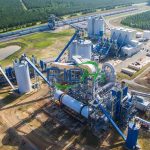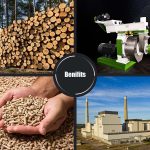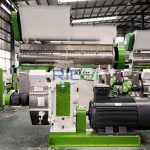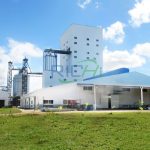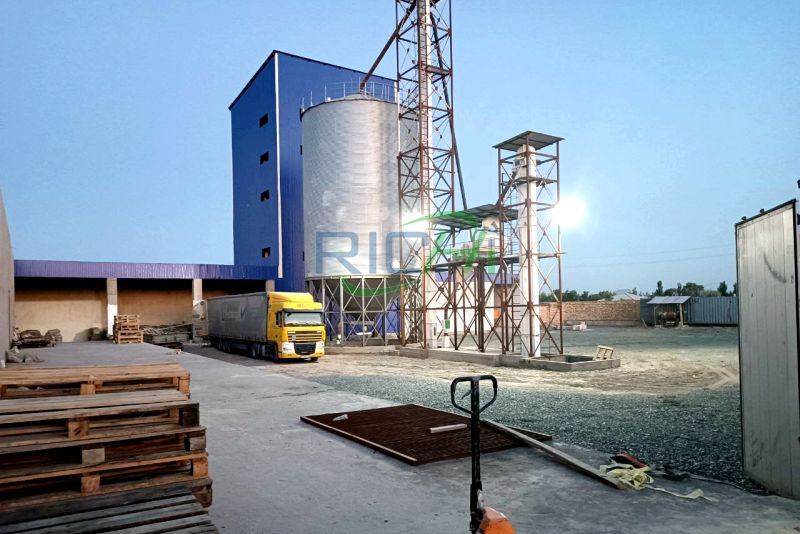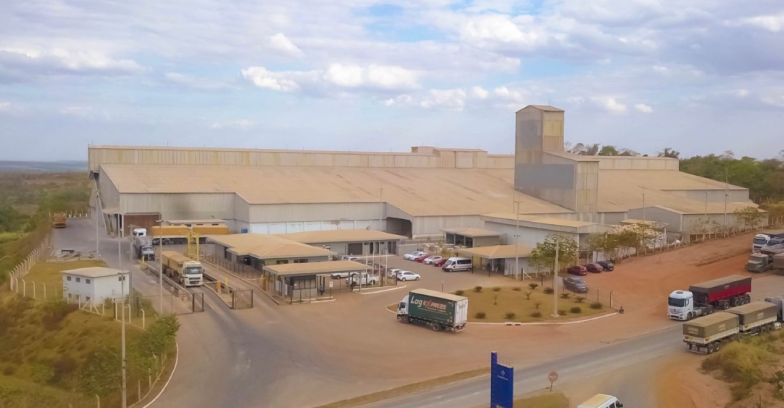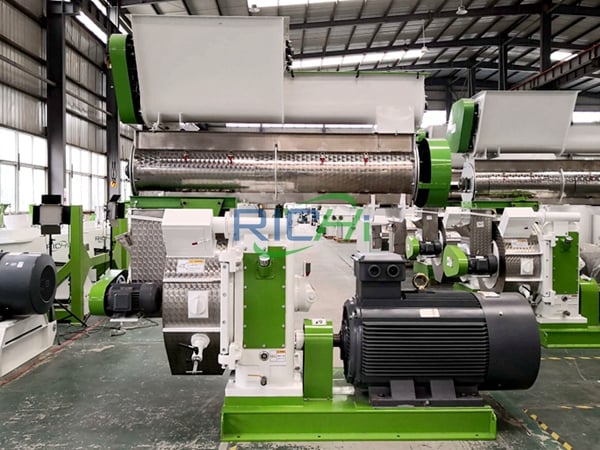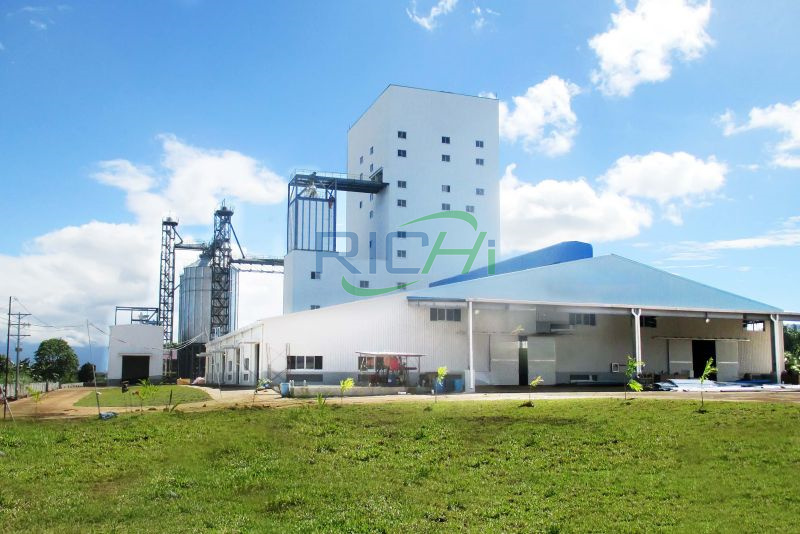In the competitive landscape of the animal feed industry, the efficiency of production machinery plays a crucial role in determining operational success and profitability. A 10 t/h animal feed production machine is designed to meet the needs of medium-scale operations, providing a balance between capacity and flexibility. This article examines the production efficiency of a 10 t/h feed production machine and compares it with similar equipment, highlighting key factors that influence performance.
1. Understanding Production Efficiency
Production efficiency in animal feed manufacturing refers to the ability of a machine to convert raw materials into finished feed products with minimal waste, optimal energy consumption, and high-quality output. Several factors contribute to production efficiency, including:
- Output Capacity: The amount of feed produced per hour.
- Energy Consumption: The amount of energy required to produce a given quantity of feed.
- Quality of Feed: The nutritional value, consistency, and physical characteristics of the finished product.
- Downtime: The amount of time the machine is not operational due to maintenance, repairs, or other interruptions.
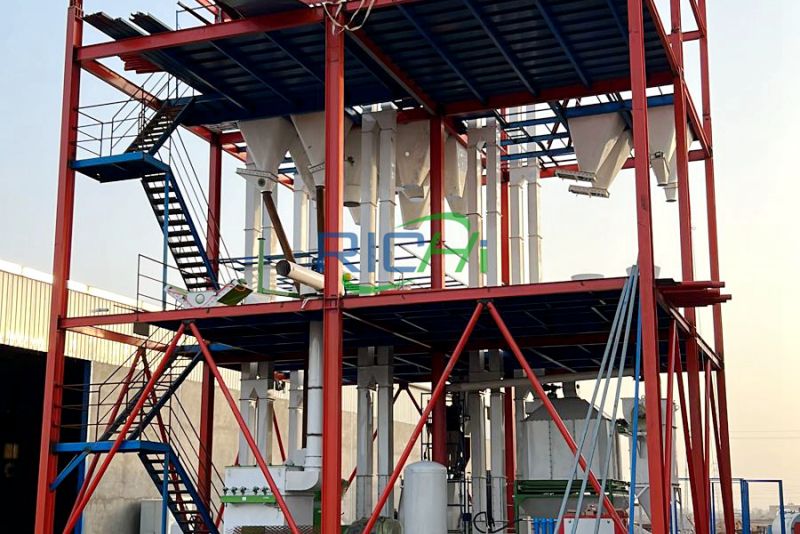
2. Comparing Capacity and Output
A 10 t/h animal feed production machine is designed to produce 10 tons of feed per hour under optimal conditions. This capacity is suitable for medium-sized operations that require flexibility in feed formulations and the ability to respond to changing market demands.
- Similar Equipment: In comparison, smaller machines (e.g., 5 t/h) may offer lower initial costs and require less space, but they may not meet the production demands of larger operations. Conversely, larger machines (e.g., 15 t/h or 20 t/h) can handle higher volumes but may require a larger investment and more extensive infrastructure.
- Efficiency of Output: The efficiency of output also depends on the type of feed being produced. For instance, producing high-density pellets may require more energy and time than producing lower-density feeds, impacting overall efficiency.
3. Energy Consumption
Energy consumption is a critical factor in assessing the efficiency of a 10 t/h animal feed making machine.
- Energy Efficiency: Modern feed production machines are designed to be energy-efficient, utilizing advanced technologies such as variable frequency drives (VFDs) and energy-efficient motors. These features help reduce energy consumption while maintaining output levels.
- Comparison with Similar Equipment: When comparing energy consumption, a 10 t/h machine may outperform smaller machines in terms of energy efficiency due to its ability to produce larger batches, thus reducing the energy required per ton of feed produced. However, larger machines may have higher absolute energy consumption due to their size, necessitating a careful analysis of energy costs relative to production output.
4. Quality of Feed
The quality of the feed produced is a significant indicator of the efficiency of a feed production machine.
- Consistency and Nutritional Value: A 10 t/h animal feed production machine can produce high-quality feed pellets that meet specific nutritional requirements. The ability to control parameters such as moisture content, temperature, and mixing time is crucial for achieving consistent quality.
- Comparison with Similar Equipment: Smaller machines may struggle to maintain consistent quality due to their limited capacity and potential for variability in feed formulations. Larger machines, while capable of producing high volumes, may require more sophisticated control systems to ensure quality across different batches.
5. Downtime and Maintenance
Downtime due to maintenance and repairs can significantly affect the overall efficiency of a feed production machine.
- Maintenance Practices: A well-maintained 10 t/h machine can operate efficiently with minimal downtime. Implementing preventive maintenance schedules, conducting regular inspections, and training operators on proper usage can help reduce the risk of breakdowns.
- Comparison with Similar Equipment: Smaller machines may have simpler designs that require less maintenance, but they may also have a shorter operational lifespan. Larger machines, while potentially more robust, may require more complex maintenance procedures and spare parts, leading to longer downtimes if not managed effectively.
6. Automation and Control Systems
The integration of automation and control systems can enhance the efficiency of a 10 t/h animal feed production machine.
- Automation Benefits: Automated systems allow for real-time monitoring and control of production parameters, reducing the need for manual intervention and minimizing errors. Features such as programmable logic controllers (PLCs) and human-machine interfaces (HMIs) enable operators to optimize the production process.
- Comparison with Similar Equipment: Smaller machines may lack advanced automation features, limiting their efficiency and flexibility. In contrast, larger machines often come equipped with sophisticated control systems that enhance their operational capabilities.
7. Cost-Effectiveness
When comparing the production efficiency of a 10 t/h animal feed production machine with similar equipment, cost-effectiveness is a crucial consideration.
- Initial Investment vs. Long-Term Savings: While a 10 t/h machine may require a higher initial investment compared to smaller machines, its ability to produce higher volumes and maintain quality can lead to greater long-term savings. Additionally, energy-efficient features can further reduce operational costs.
- Return on Investment (ROI): Evaluating the ROI of a 10 t/h machine involves analyzing production output, energy consumption, maintenance costs, and feed quality. A well-chosen machine can provide significant returns over its operational lifespan.
Conclusion
The production efficiency of a 10 t/h animal feed production machine is influenced by various factors, including capacity, energy consumption, feed quality, downtime, and automation. When compared to similar equipment, the 10 t/h machine offers a balanced solution for medium-scale operations, providing the ability to produce high-quality feed while maintaining operational efficiency.
By carefully considering these factors and selecting the right equipment, feed manufacturers can optimize their production processes, reduce costs, and enhance their competitiveness in the market. As the demand for animal feed continues to grow, investing in efficient and reliable machinery will be essential for meeting the needs of the livestock industry.
For details please contact: pellet plant
WhatsApp:86 138 3838 9622
Email:enquiry@richipelletmachine.com


